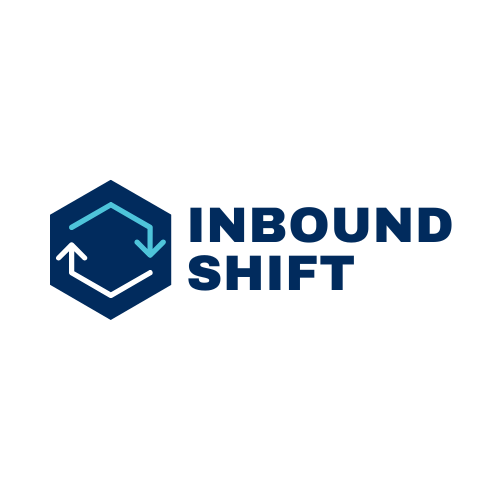In the dynamic world of marketing, the winds of change have shifted towards a more engaging and customer-centric approach known as inbound marketing. This transformative strategy has redefined how businesses interact with their audience, fostering a relationship built on value, relevance, and trust.
In this comprehensive exploration, we delve into the essence of inbound marketing, contrast it with traditional outbound tactics, and unveil the pivotal role of specialized agencies in orchestrating successful inbound strategies.
Through audience segmentation, the strategic use of social media and email marketing, and the critical importance of goal setting, we will guide you through the intricacies of implementing and optimizing an inbound marketing strategy, illuminated by real-world examples and actionable tips.
1. The Evolutionary Tale of Marketing Strategies
The journey of marketing has been a tale of evolution, from the broad, untargeted reach of traditional advertisements to the nuanced, engaging allure of inbound marketing.
This evolution mirrors the changing landscape of consumer behavior, where digital platforms have become the main stage for brand-consumer interactions.
Inbound marketing emerged as a response to this shift, championing a methodology that attracts customers through content and experiences tailored to their needs and interests.
What Exactly Is Inbound Marketing?
Inbound marketing is a strategy that focuses on attracting, engaging, and delighting customers by providing value through content that is relevant to their needs and interests.
Unlike traditional marketing methods that intrusively push products or services onto consumers, inbound marketing pulls potential customers towards a brand using compelling content, thereby facilitating a more organic discovery and connection process.
2. Inbound Marketing Vs. Outbound Marketing
The contrast between inbound and outbound marketing is stark. Outbound marketing employs tactics that aim to reach a broad audience through methods like TV ads, billboards, and cold calling, often interrupting the consumer’s experience.
Inbound marketing, on the other hand, relies on creating content that potential customers seek out themselves, leading to a more natural and welcomed engagement.
Effectiveness and Consumer Perception
Inbound marketing strategies tend to be more effective in today’s digital age because they align with how people want to discover and interact with brands—on their terms.
Consumers increasingly prefer to research products and services online, seeking recommendations through social networks and being drawn to brands that provide the most value and relevance to their search.
This shift in consumer behavior underscores the effectiveness of inbound over outbound, as it builds a foundation of trust and authority between the brand and the consumer.
3. The Role of an Inbound Marketing Agency
An inbound marketing agency acts as a navigator in the complex digital landscape, helping businesses to attract, engage, and delight their target audience through a cohesive and strategic inbound marketing plan.
These agencies specialize in creating and implementing strategies that leverage content marketing, SEO, social media marketing, and email marketing to draw potential customers in rather than reaching out to them unsolicited.
Transforming Business Strategies
Inbound agencies transform traditional marketing strategies by focusing on creating quality content that addresses the interests and challenges of potential customers.
This approach not only attracts quality leads but also nurtures them through the sales funnel, converting them into loyal customers and advocates for the brand.
4. Audience Segmentation in Inbound Marketing
Understanding and segmenting your audience is a cornerstone of effective inbound marketing. By dividing the audience into distinct groups based on their characteristics, behaviors, and needs, businesses can tailor their content and messaging to resonate more deeply with each segment.
Enhancing Campaign Effectiveness
Audience segmentation allows for more personalized and relevant content creation, significantly enhancing the effectiveness of marketing campaigns. When content speaks directly to the needs and interests of a specific group, it is more likely to engage and convert.
5. Social Media’s Role in Inbound Marketing
Social media platforms are invaluable tools in the inbound marketing arsenal, offering a direct line to engage with audiences in a personal and interactive way. These platforms enable businesses to share content, join conversations, and build communities around their brand.
Successful Tactics for Engagement
Successful social media tactics often involve sharing valuable content, engaging in two-way conversations, and using targeted advertising to reach specific segments of the audience. The interactive nature of social media also allows for immediate feedback and insights into what content resonates with the audience.
6. Fueling Strategy with Email Marketing
Email marketing complements inbound strategies by providing a direct channel to deliver personalized content to potential and existing customers. By nurturing leads with targeted information and offers, email marketing can significantly contribute to converting leads into customers and encouraging repeat business.
Nurturing Leads and Engagement
Effective email marketing involves sending the right message, to the right person, at the right time. Segmenting email lists based on user behavior and preferences ensures that recipients receive content that is relevant and valuable to them, thereby fostering a deeper engagement with the brand.
7. The Crucial Role of Goal Setting
Goal setting is fundamental to the success of any inbound marketing strategy. Clear, measurable goals provide direction and focus, enabling businesses to track progress and make data-driven decisions.
Tips for Effective Goal Setting
When setting inbound marketing goals, it’s important to be specific, measurable, achievable, relevant, and time-bound (SMART). This approach ensures that goals are clear and actionable, with defined metrics for success.
8. Inbound Marketing in Action: Real-World Examples
Examining real-world examples of successful inbound marketing campaigns can provide valuable insights and inspiration. From compelling content strategies to innovative social media campaigns, these examples highlight the effectiveness of inbound marketing in building brand awareness, engaging audiences, and driving conversions.
Practical Inbound Marketing Tips
To implement or improve inbound marketing strategies, businesses should focus on creating high-quality, relevant content, optimizing search engines, and continuously analyzing performance data to refine their approach. Engaging with the audience through personalized communications and leveraging the power of social proof is also key to enhancing inbound efforts.
The Path Forward with Inbound Marketing
Inbound marketing represents a powerful, customer-centric approach to building lasting relationships with consumers. By providing value through relevant, engaging content and interactions, businesses can attract more qualified leads, convert them into loyal customers, and drive sustainable growth.
Embracing inbound marketing strategies not only aligns with contemporary consumer behaviors but also sets the stage for a more connected and mutually beneficial brand-consumer relationship.
In navigating the shift towards inbound marketing, businesses can benefit from the expertise of specialized agencies, the strategic use of social media and email marketing, and a strong focus on audience segmentation and goal setting.
By adopting these practices, companies can effectively engage their target audience, fostering a marketing environment where value and relevance reign supreme.
Read more articles:


Inbound Marketing is a great tool to bring organic traction.